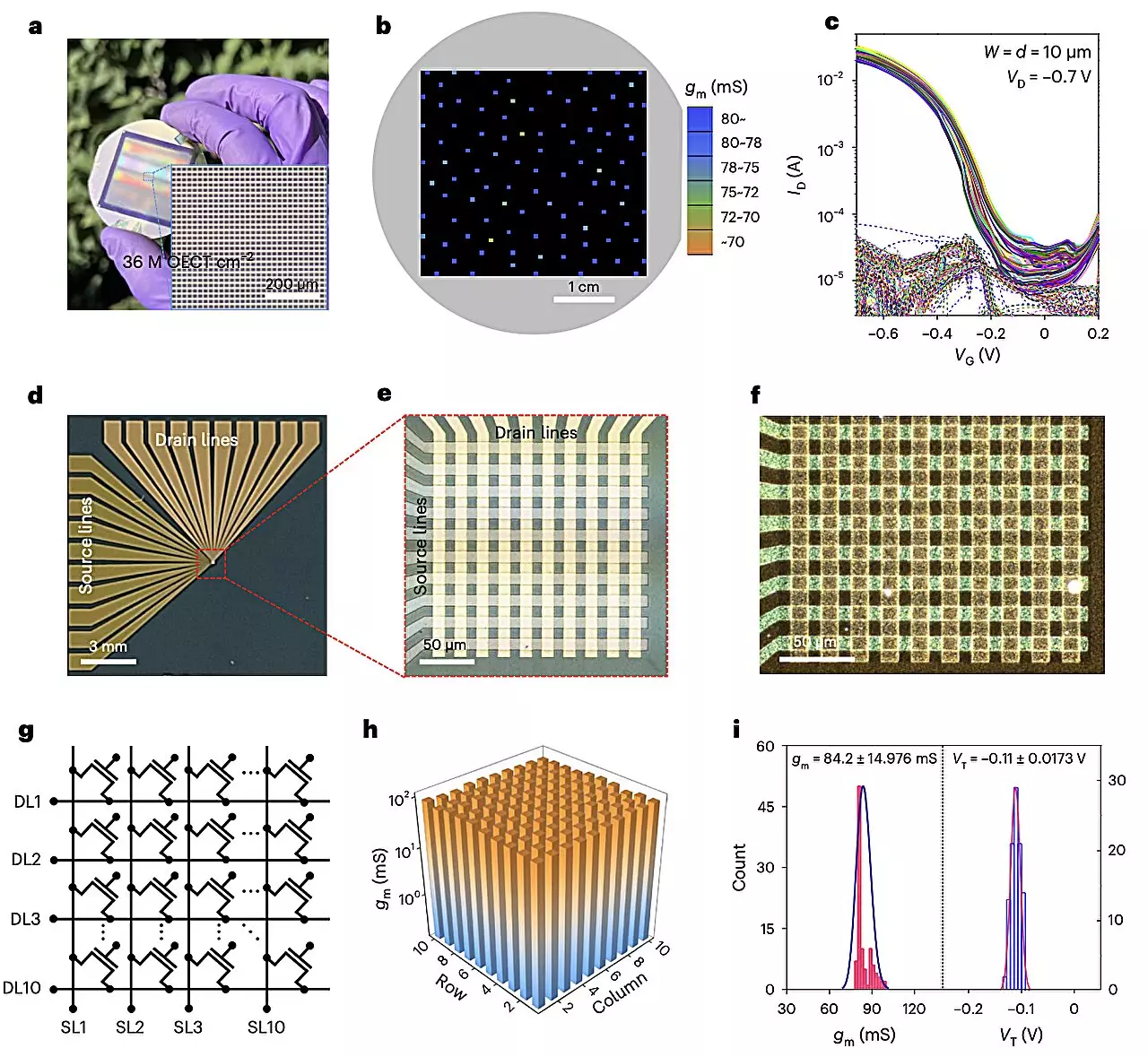Organic electrochemical transistors (OECTs) have long been hailed as a breakthrough technology due to their ability to modulate electrical current in response to small changes in voltage. These transistors, based on organic superconducting materials, are anticipated to revolutionize the field of electronics, particularly in brain-inspired and wearable technologies. However, despite their numerous advantages, most conventional OECTs have been plagued by stability issues and slow redox processes that hinder their performance.
Researchers at Northwestern University recently introduced a groundbreaking method to fabricate high-density and mechanically flexible OECT arrays. By utilizing electron-beam exposure to micropattern organic semiconductors, Jaehyun Kim, Robert M. Pankow, and their team were able to create vertically stacked OECT arrays with densities of up to 7.2 million transistors per cm2. This innovative approach not only enhances the scalability of OECT fabrication but also overcomes the limitations of conventional patterning techniques.
E-Beam Lithography for Enhanced Performance
The key to the success of this new fabrication strategy lies in electron beam lithography (eBL), a process that involves exposing organic semiconductor films to a direct beam of electrons. Unlike traditional methods that rely on masks and chemical solvents, eBL preserves the electronic conductivity of the films while creating ultra-small and high-density patterns with well-defined channel regions. This technique enables the seamless integration of OECT structures into arrays and circuits, resulting in transistors with superior performance characteristics.
Advancements in OECT Logic Circuits
In addition to fabricating high-density OECT arrays, Kim, Pankow, and their colleagues also demonstrated the potential of their approach in creating vertically stacked logic circuits. By leveraging their eBL strategy, they successfully developed NOT, NAND, and NOR gates with exceptional performance and operational stability. These advancements pave the way for the realization of more complex OECT-based electronic devices with enhanced functionality and reliability.
The recent study conducted by the Northwestern University research team holds immense promise for the future of organic electrochemical transistors. By introducing a novel fabrication technique that leverages e-beam exposure, they have opened up new possibilities for the integration of OECTs into electronic devices. Furthermore, the development of high-density and mechanically flexible OECT arrays and circuits sets the stage for the widespread adoption of these transistors in various applications, ranging from biosensors to neuromorphic systems.
The innovative work carried out by Kim, Pankow, and their colleagues represents a significant milestone in the advancement of organic electrochemical transistors. By addressing the limitations of conventional OECTs through e-beam exposure and micropatterning, they have laid the foundation for a new era of high-performance, flexible electronic devices. As researchers continue to explore the potential of OECT technology, we can expect further breakthroughs that will propel the field of electronics into a new realm of innovation and possibilities.


Leave a Reply